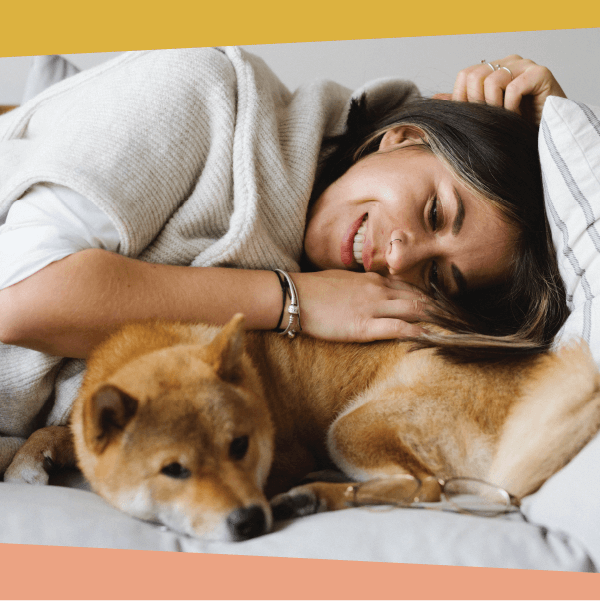
Dogs have enjoyed having us home during the COVID-19 Stay Home mandate. It will be important to prepare your dog for the day you go back to work so they do not experience stress or fear when they are alone. Here are some tips on how to make that happen.
Step One: Know what your dog is thinking, feeling, and saying with their body language
- Knowing what your dog is feeling will help you know how comfortable your dog is when they are learning to be alone: See Body language of fear in dogs (chart)
Step Two: Gather your enrichment supplies
- Enrichment will help distract your dog, prevent boredom, and make alone time rewarding so it is smart to leave your dog with enrichment when you are not home. If you have more than one dog or a dog that guards or protects certain resources, make sure you manage those resources safely (find alternative resources that don’t trigger resource guarding or separate the dogs with a baby gate). See How to meet dog enrichment needs
Step Three: Prepare your environment
- Play white noise, pink noise, or classical music when you are not home to muffle the increased outdoor sounds your dog will hear when activity levels are back to normal.
- If your dog is stressed by pedestrian traffic outside of your windows, draw the blinds and close windows when you are not home.
- Try adding a dog appeasing pheromone diffuser to your home — pheromonal therapy makes many dogs feel more safe and secure. Many dogs find lavender soothing, too.
- Make sure your dog has access to a cozy, soft bed to rest on.
- Dog proof your home by making sure all food items are put away and not left on counters or tables, that trash cans are secure in a place where your dog cannot access them, and that dirty laundry is put away. Counters, trash, and laundry may be very attractive to bored dogs.
Step Four: Hands-on alone time training
Dogs are among the most pro-social species on the planet. Being alone does not come naturally to them. You may need to teach your dog that being alone is not scary.
- Pick a cue to tell your dog that you will be doing this training such as “Be right back!” Use it each time you depart. Turn on a white noise machine or soothing music just before leaving and give enough long-term enrichment items to get them through each training period. Leave your home starting with just a minute or two at first. Do not make a big deal of your arrivals or departures.
- If your dog is comfortable with your initial departure period, slowly increase your departures by two-minute intervals once your dog is successfully able to tolerate previous shorter periods of time alone. If your dog is destructive or crying during any alone time training periods, you are moving too fast! The next departure must be shorter. More practice at an easier level needs to be done before moving forward again.
- Here are additional resources for alone time training:
- Dog and puppy separation anxiety training (tutorial)
Step Five: Consider treating your dog to a dog walk or adventure
Dog walks and adventures are great enrichment, great loneliness busters, and they break up the monotony of the day. Many dogs enjoy a mid-day walk or local adventure. Here are some recommended providers:
Step Six: Assess for serious behavior issues
Some dogs have separation-related anxiety and panic — these are very serious attachment disorders that need to be treated with the help of a veterinarian and a humane behavior professional. Seek help right away if your dog is experiencing any of the following symptoms when left alone:
- Mournful crying or howling that lasts more than a few minutes after you depart
- Complaints from neighbors of excessive vocalization
- In-home destruction, particularly at windows, doors, fences, and crates
- Loss of potty training and appetite when you are not home
- Vomiting, excessive drooling, excessive panting, or sweaty paws when home alone
- Significant pacing and inability to settle or sleep when alone
Disclaimer and waiver of liability
By using the information presented here you agree to the following: In no event shall Mega Hearts, LLC. its contractors, employees, or partners be liable for any direct, indirect, punitive, incidental, special, or consequential damages whatsoever arising out of or connected with the use or misuse of any information presented here. You agree and acknowledge that any training and behavior advice be used at your own risk and you should assess the risks individual to your animal(s), any animal(s) in your care, and those that interact with your animals/animals in your care before using any advice or information with or for any animal.